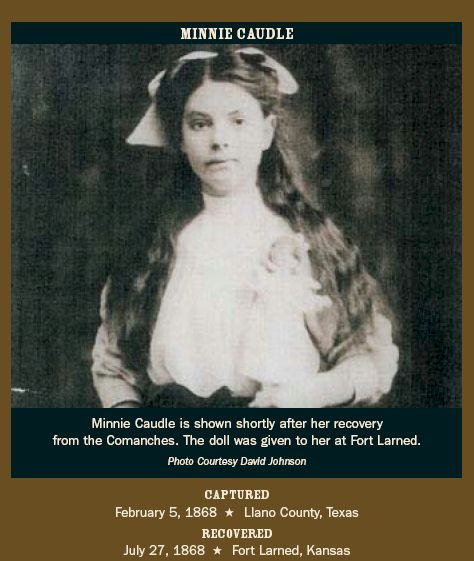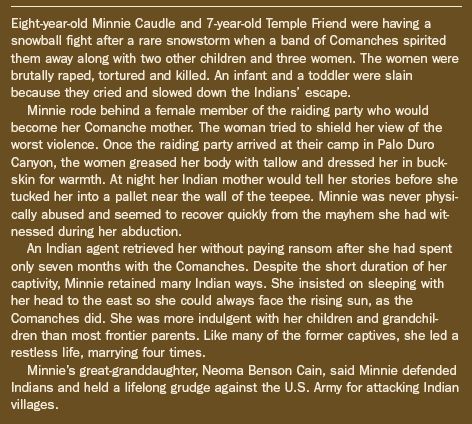
 |
dren—black, brown and white— who were taken by Indian tribes over two centuries. All these children metaphorically straddled two fires, one tended by their birth parents and the other tended by the Indians who carried them away. And even though their time with Indians was limited, most survivors came to love their riding, roaming days. “The phenomenon of preferring native life was more common than not in captured narratives, although the women didn’t fare as well as the men,” said Zesch. Zesch’s nine subjects, three of them German speakers, lived with the last of the free-ranging Plains Indians. All were given full tribal rights.
Despite the
brutality of the raids in which some
were captured, the Texas
children quickly changed alle- giances.
some of them were enthusiastically participating in raids near their for- mer family homesteads. Adolph, for example, was a particularly daring warrior by the age of 11. He sneaked into white campsites and stole horses, commanded a group of Comanches in a desperate fight with Texas Rangers, and even burned down a homestead near his family’s place. Zesch believes that at least four of the seven boys “almost cer- tainly killed people.” He said there have been few aca- demic studies of how the children adapted to Indian culture so quickly. “The Stockholm Syndrome [in which captives begin to relate to their cap- |
